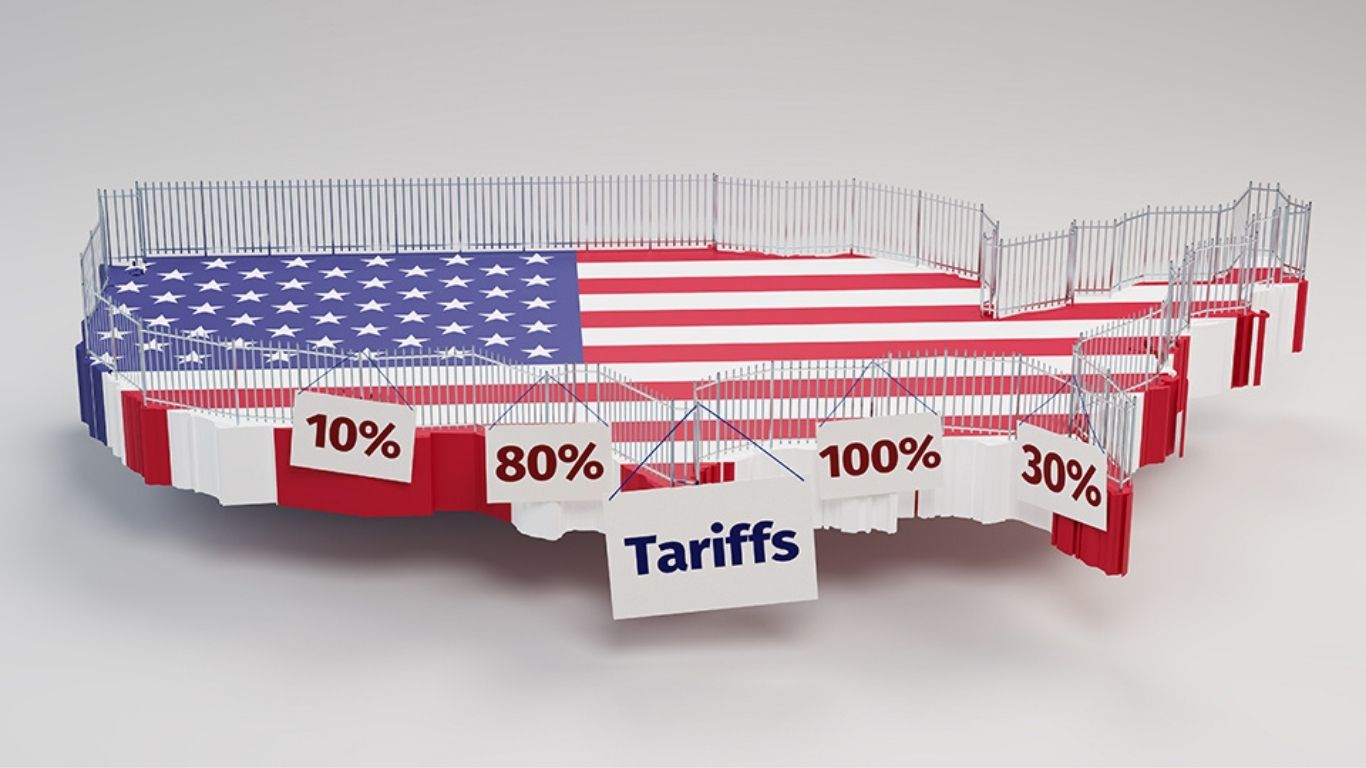It’s a curious thing, watching global markets unfold like an unfinished jigsaw puzzle – some pieces fit, others don’t. And for all the talk of rebounds and upticks, Asian markets took a hit on Thursday, even as Wall Street managed to rebound on news of a slight dip in U.S. consumer prices. It’s almost like a mad game of tug-of-war, where the heavyweights are all pulling in different directions, and the global economy is stuck somewhere in the middle, wondering which way it’s going.
The Tumultuous Day for Asian Markets
Over in Asia, things didn’t look quite as rosy. Chinese markets, particularly sensitive to the trade tensions brewing, took a bit of a dive. Hong Kong’s Hang Seng dropped by 0.7%, closing at 23,426.80, while Shanghai’s Composite index wasn’t far behind, losing 0.4% to settle at 3,357.02. Investors, of course, had their eyes fixed on the big question: what will President Trump’s next move be in the ongoing trade war with China? The uncertainty surrounding trade negotiations always throws a bit of a wrench into market stability, and it’s clear that investors are not exactly thrilled about what’s coming down the pipeline.
But Japan’s Nikkei 225 decided to buck the trend, ending the day up by 0.5%, clocking in at 37,014.82. A small victory, sure, but in the midst of all this volatility, we’ll take what we can get. South Korea’s Kospi nudged down by 0.1%, while Australia’s S&P/ASX 200 saw a decline of 0.4%. Taiwan and India’s markets weren’t much better, though India’s Sensex managed a modest 0.1% gain. Meanwhile, Bangkok’s SET index slipped by 0.1%. It’s like a sea of red, with a few isolated green patches — but don’t let those fool you.
The Trump Tariff Tangle: A Global Domino Effect
If you’re trying to follow the threads of this market turmoil, you might want to grab a cup of coffee, because it all starts with the trade war between the U.S. and just about everyone else. On Wednesday, the S&P 500 managed to gain 0.5%, despite a day of tumultuous trading. At one point, it was up 1.3%, only to stumble later and end with a slight uptick. The Dow Jones Industrial Average couldn’t manage such a recovery, finishing the day down 0.2%, while the Nasdaq managed to end up 1.2%, largely due to the rebound of stocks tied to artificial intelligence.
But the real kicker? The backlash against the U.S. tariff decisions. When President Trump slapped tariffs on steel and aluminum, it sent ripples across global markets. The European Union, in its characteristic fashion, slapped tariffs right back on U.S. products like bourbon and motorcycles — two goods that might not seem connected, but in the world of international trade, it’s all part of the dance.
European Commission President Ursula von der Leyen had this to say: “Tariffs are taxes. They are bad for business, and worse for consumers.”
And yet, this tariff saga seems to have no end in sight. The uncertainty of it all — the constant back-and-forth between countries, the threats, the promises, the retaliatory measures — is having a corrosive effect on confidence. Businesses are starting to feel the strain, and U.S. consumers are feeling it too. That could spell trouble down the line, especially for an economy already grappling with the specter of inflation.
The Trade War: A Ripple Effect on U.S. Businesses
Speaking of the pain inflicted by Trump’s tariffs, let’s take a closer look at how it’s affecting U.S. businesses. It’s not all doom and gloom, mind you — some sectors are still standing tall. Take Casey’s General Stores, for example. This company, which runs over 2,800 convenience stores in the U.S., reported a 6.2% rise in stock value after announcing better-than-expected earnings. Hot sandwiches and fuel sales seem to be their secret sauce, and they’re holding steady despite the ongoing chaos.
Then there’s Delta Air Lines, which found itself caught in the crossfire of a trade war that’s impacting air travel demand. The airline’s stock took a 3% hit after it reported weaker demand for close-in bookings, compounding a previous drop of 7.3%. This is just one example of the widespread effects that tariffs can have on companies — even those that don’t directly deal with steel or motorcycles.
And it’s not just the U.S. businesses that are feeling the heat. Canada has also retaliated, slapping tariffs on U.S. products, including sports equipment and tools. You can almost feel the collective sigh of frustration from businesses everywhere — we’re all stuck in this ridiculous game of tit-for-tat.
The Inflation Dilemma: A Concern for the Fed
Of course, all this talk of tariffs comes at a time when inflation is already a major concern in the U.S. The latest inflation report revealed that prices rose less than expected, which, in theory, should be good news for consumers and businesses alike. But the question remains: how much damage will Trump’s tariffs do in the long run?
Prices might be higher because of these tariffs — after all, U.S. importers have to pass on the costs to their customers. For the Federal Reserve, this is a tricky situation. It had been cutting interest rates last year to prop up the economy, but now, it finds itself in a position where it needs to balance inflation concerns with the threat of a slowing economy.
As the markets wrestle with the implications of these policy decisions, it’s becoming clear that confidence is the real casualty here. Consumers are starting to tighten their belts, businesses are scaling back, and the once-unshakable optimism about the future of the economy seems to be crumbling.
The Oil Quandary: Stuck in Neutral
It’s not just tariffs and inflation causing trouble. The oil markets are also stuck in a rut, unable to make any real moves. U.S. benchmark crude oil dropped by 11 cents to $67.57 per barrel, while Brent crude, the international standard, lost just 5 cents, settling at $70.90 per barrel. The oil market seems to be in a holding pattern, with little to no direction. This stagnant situation in the oil markets only adds to the overall sense of unease in the global economy.
Currency Swings: The Unpredictable Dollar
On the currency front, the U.S. dollar was weaker on Thursday, falling to 147.88 Japanese yen from 148.25 yen. The euro also saw a slight uptick, rising to $1.0889 from $1.0887. It’s a small move, but in a market as unpredictable as this one, every little shift counts.
Conclusion: Uncertainty Reigns Supreme
So, where does this leave us? The markets are on edge, the global trade environment is uncertain, and the question on everyone’s mind is: how much longer can this last? The trade war between the U.S. and its partners continues to create a ripple effect that’s felt far and wide. While the U.S. stock market might have posted a minor gain, the overall sentiment remains one of caution, with businesses and consumers bracing for whatever comes next.
In the meantime, it’s a waiting game. The jigsaw puzzle remains unsolved, and as we all know, when it comes to global markets, sometimes the pieces just don’t fit.




